Insects That Are Regularly Eaten Around The World
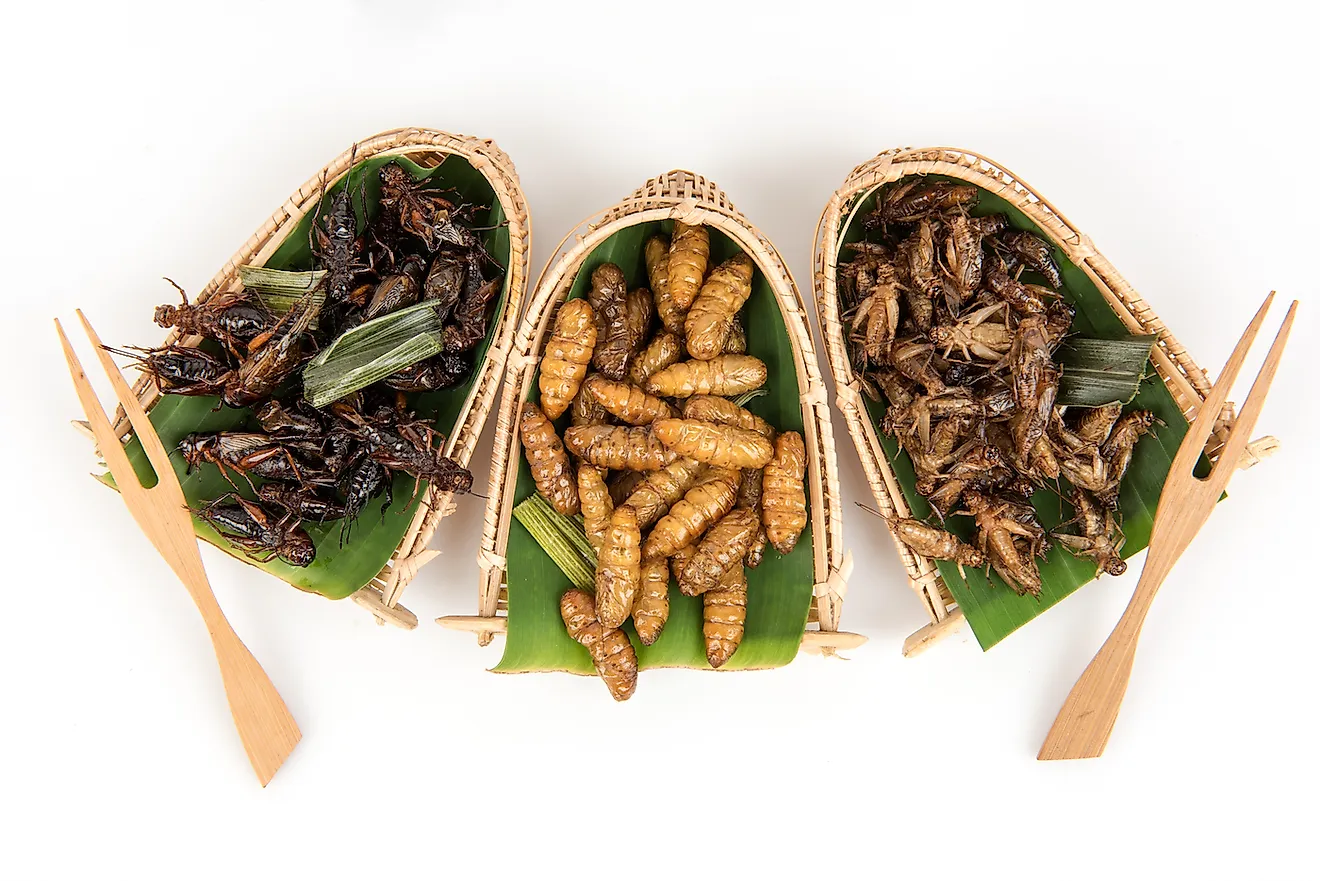
- About two billion people eat insects daily.
- A cockroach is comprised of 65% protein, whereas beef contains 50% protein.
- More than 1,000 species of insects are known to be eaten in 80% of countries worldwide.
In North America, most people consider insects to be pests more than a food source, but there are more than two billion people worldwide who consume various insects on a regular basis rather than breaking out the Raid. Many species are noted for high protein and other health benefits, and others are considered a delicacy in some countries - like tarantulas in Cambodia or scorpions in China.
While some people aren't as adventurous when it comes to their dinner plate, many of the world's insects are safe to eat and can pack a health boost with high levels of certain nutrients. They are commonly consumed in wildcrafting or survival situations, and some report insects to be notably delicious, whether eaten raw in the wild or cooked up into a unique dish.
The United Nations went so far in 2013 as to recommend people eat more insects, noting 1,900 varieties of edible critters on Earth. These are 10 commonly eaten insects around the world.
10. Ants
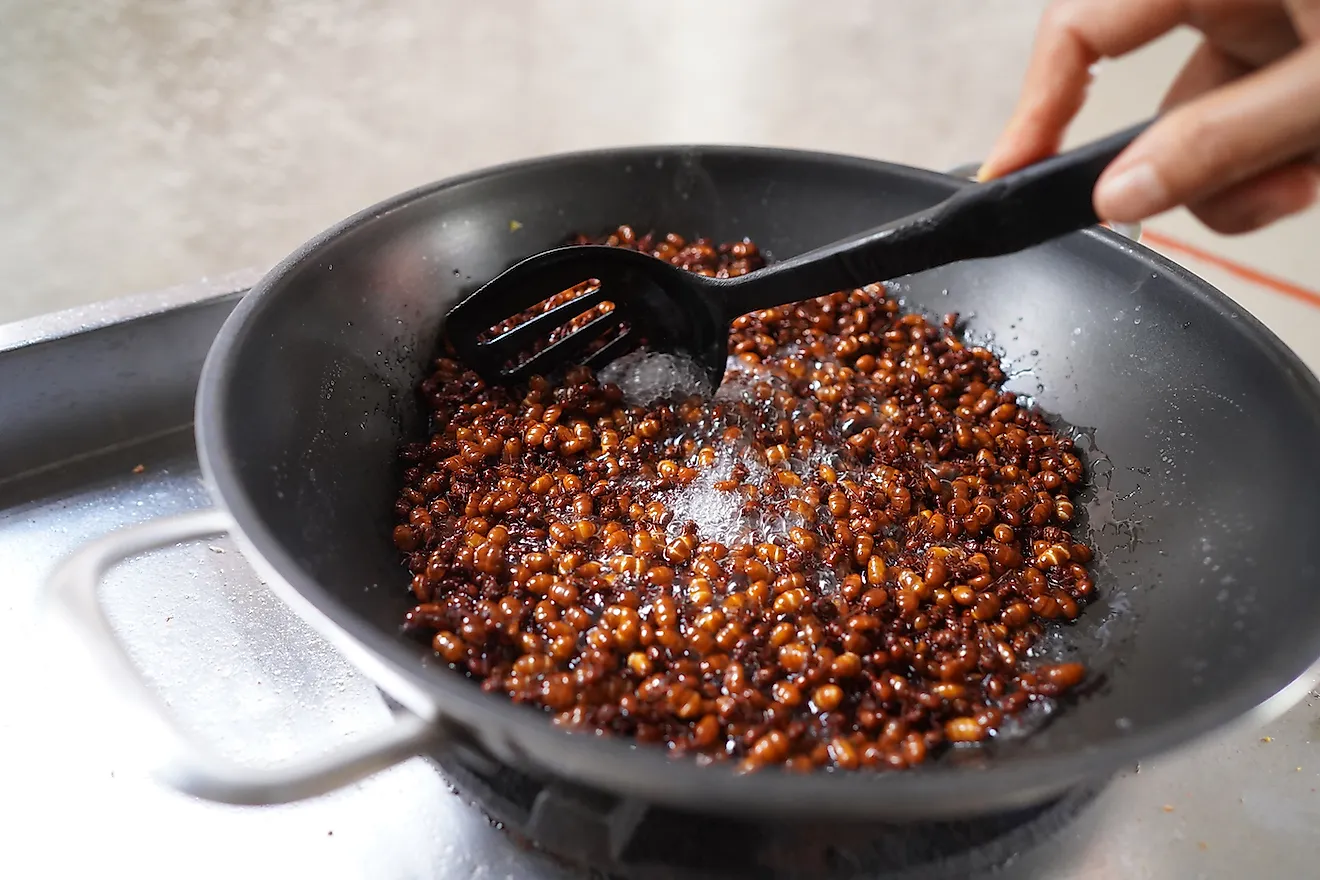
There are many varieties of edible ants, including leafcutter, honeypot, lemon, and carpenter. Each species has its own distinct flavor, but most will have a vinegary taste as the ant will release an acid when threatened, which turns it sour to predators. Boiling the ants in a shallow pan can expel the vinegary flavor.
They are typically cooked prior to eating, often roasted with salt or lightly seared and eaten like popcorn or other light snacks. Many Chinese families make hot ant soup in the winter months to stay warm. In Brazil, they are seen as a gourmet food and are often part of celebratory feasts. Sometimes ants are also used to compliment other foods as crunchy toppings on things like salads or even desserts. Mexican palates opt for the queen egg, which is a delicacy in that country and said to carry a nutty flavor.
Ants are considered good sources of protein (about 14 grams of protein in 100 grams of red ant, which is more than eggs), help with cholesterol regulation and the management of diabetes and blood pressure stabilization. They also contain calcium and iron, and are low in calories and carbs, making them a highly nutritious, low-fat alternative to meat.
9. Crickets
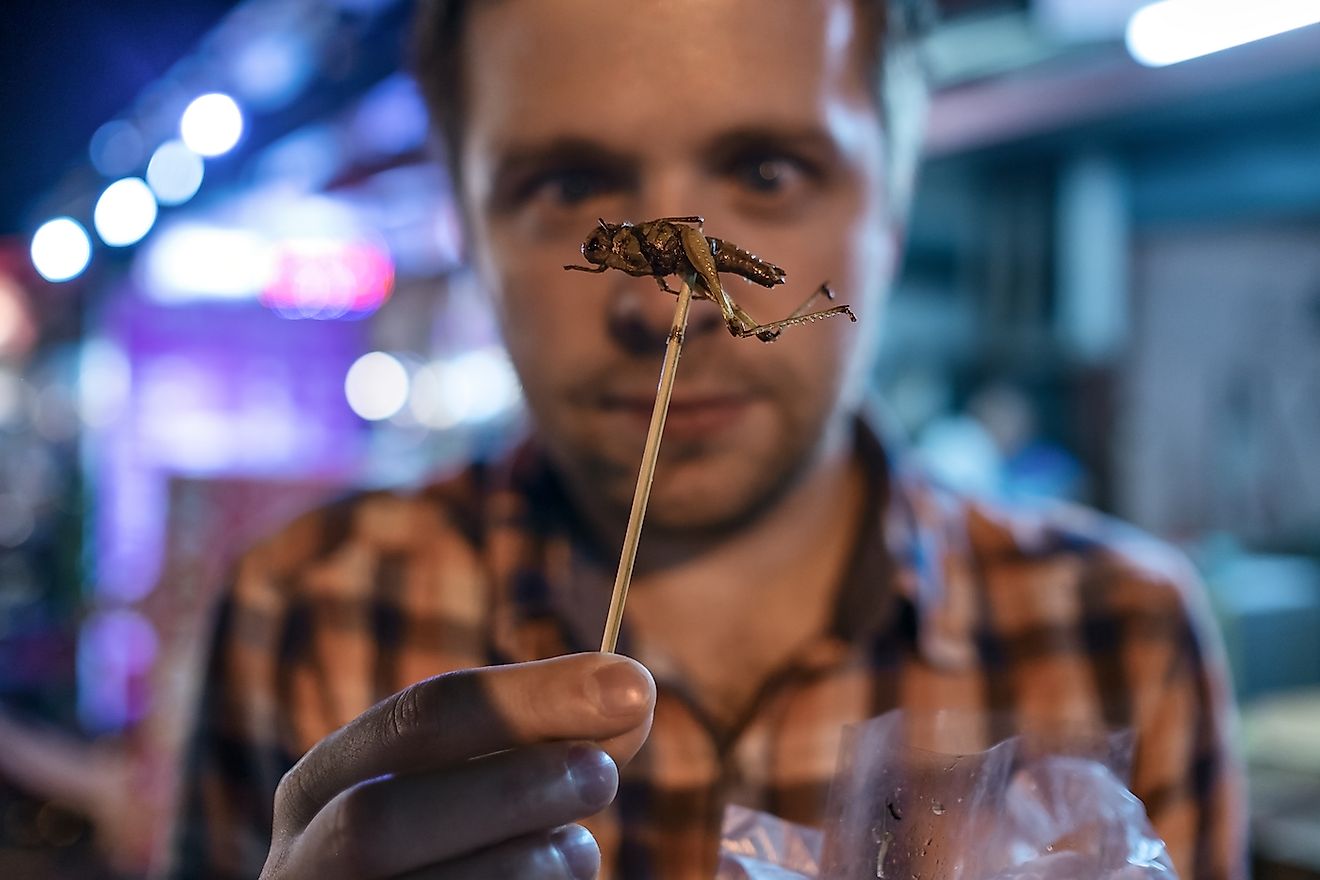
Crickets have been food for humans for centuries, and are consumed in most countries of the world, though it is most common in Thailand (where they are a familiar street food), Cambodia, and Mexico. They are typically dried and sold by the pound, and then pan-fried, baked, or roasted with a little oil and salt prior to eating - though some people do eat crickets raw.
Unlike some insects, the flavor of crickets changes based on what they consume themselves so they may taste differently in different regions. For instance, if fed with grains, corn, and fresh vegetables, the cricket will taste like sweet corn with a nutty flavor. Like ants, crickets boast more protein and less fat than beef, making them a healthy alternative. They also help improve gut bacteria, aiding with digestion, and reduce inflammation in the body.
8. Grasshoppers
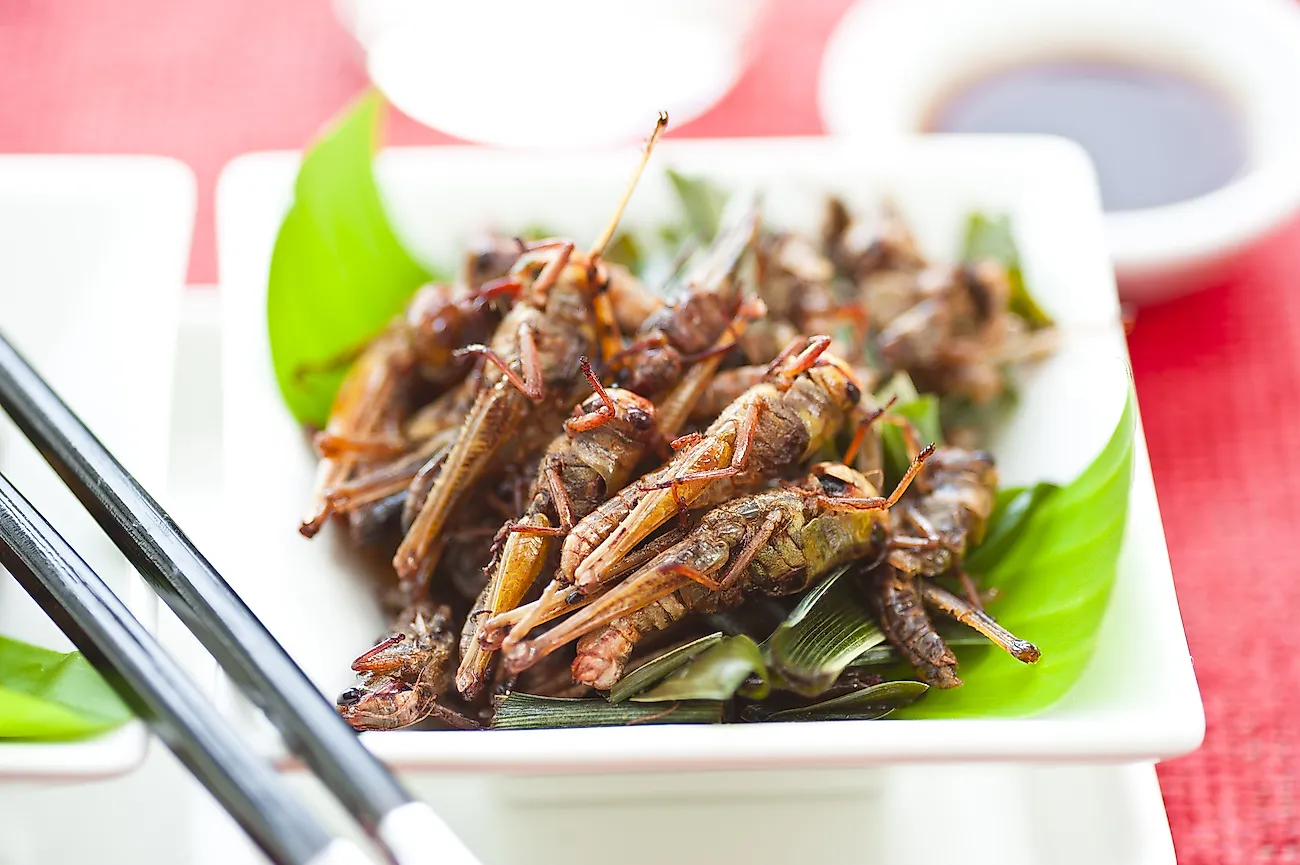
Like crickets, grasshoppers are known for a high protein content and also pack a calcium punch. They are commonly found worldwide and can be caught easily, making them a readily attainable food source in most countries, thus creating a market that has risen to meet demand for the creatures. They are most commonly eaten and sold in Mexico.
In many places, farmers allow traps to be set up on their land to catch grasshoppers, which are viewed as pests in the agriculture industry, and the insects can then be taken to market for human consumption. They are so prolific, there are products like grasshopper-based protein bars, but in most countries grasshoppers are sold by the pound and then fried or oven-roasted after removing the legs and wings, as they are considered annoying to try biting and carry no nutritional value as opposed to the hopper's body.
7. Beetles
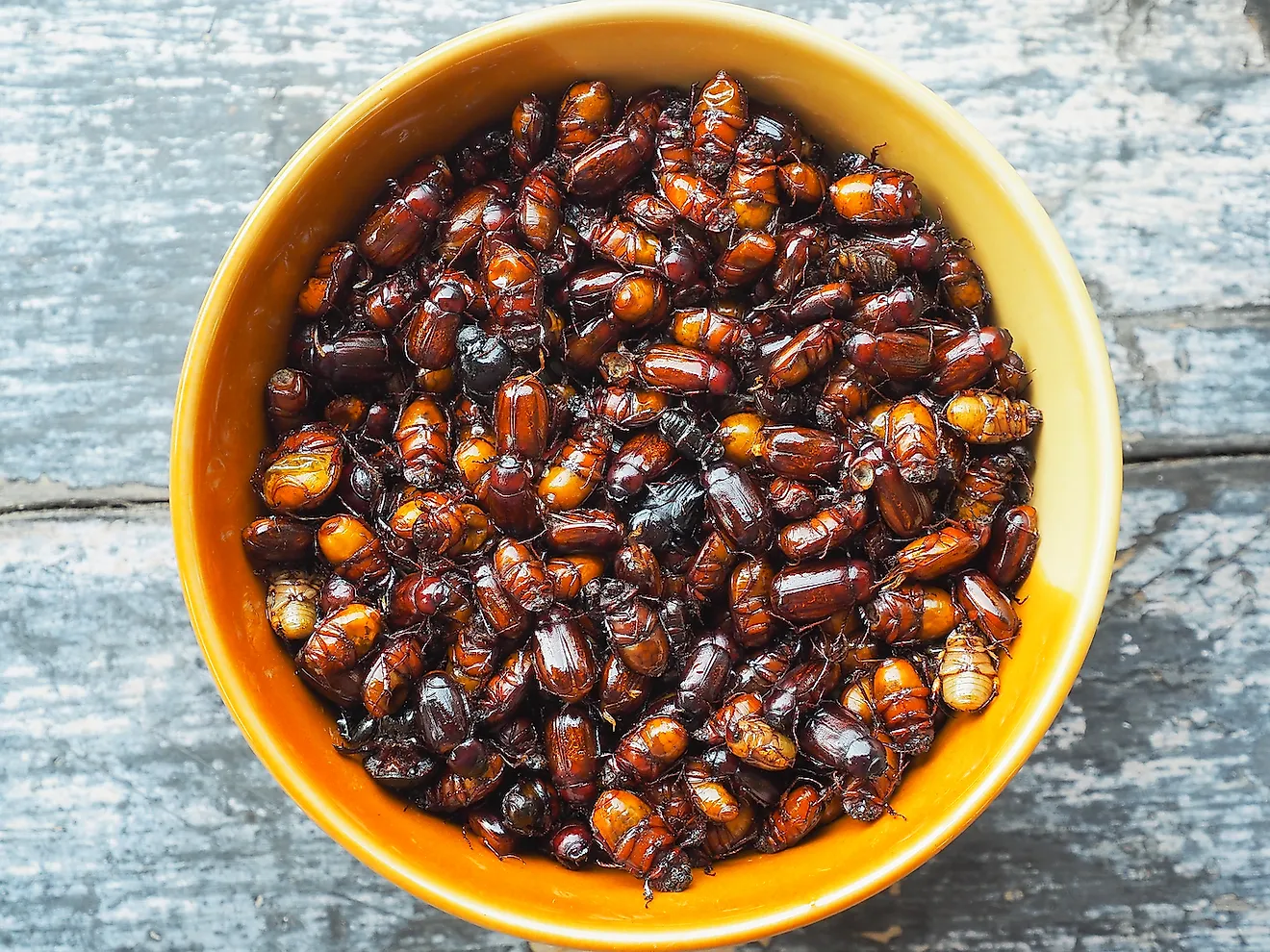
There are several species of beetle that make meals for humankind, including the long-horned, june, dung, and rhinoceros. For the most part they are consumed by people living in the Amazon basin and parts of Africa, but they are also common in other heavily-forested areas, incuding tropical forests, and are known as one of the most frequently eaten insects in the world, making up 31% of total insect consumption.
Beetles are high in protein and are capable of turning cellulose from trees, which is indigestible for humans, into more digestible fat. They also provide humans with all nine essential amino acids, vitamin E (which helps reduce inflammation), vitamin A (essential for bone growth, and eye and skin health), beta carotene (to prevent some age-induced cognitive decline), and lutein (which helps prevent some macular degeneration due to age). In addition, beetles contain ash, which is an element high in phospherous, potassium, and calcium.
6. Termites
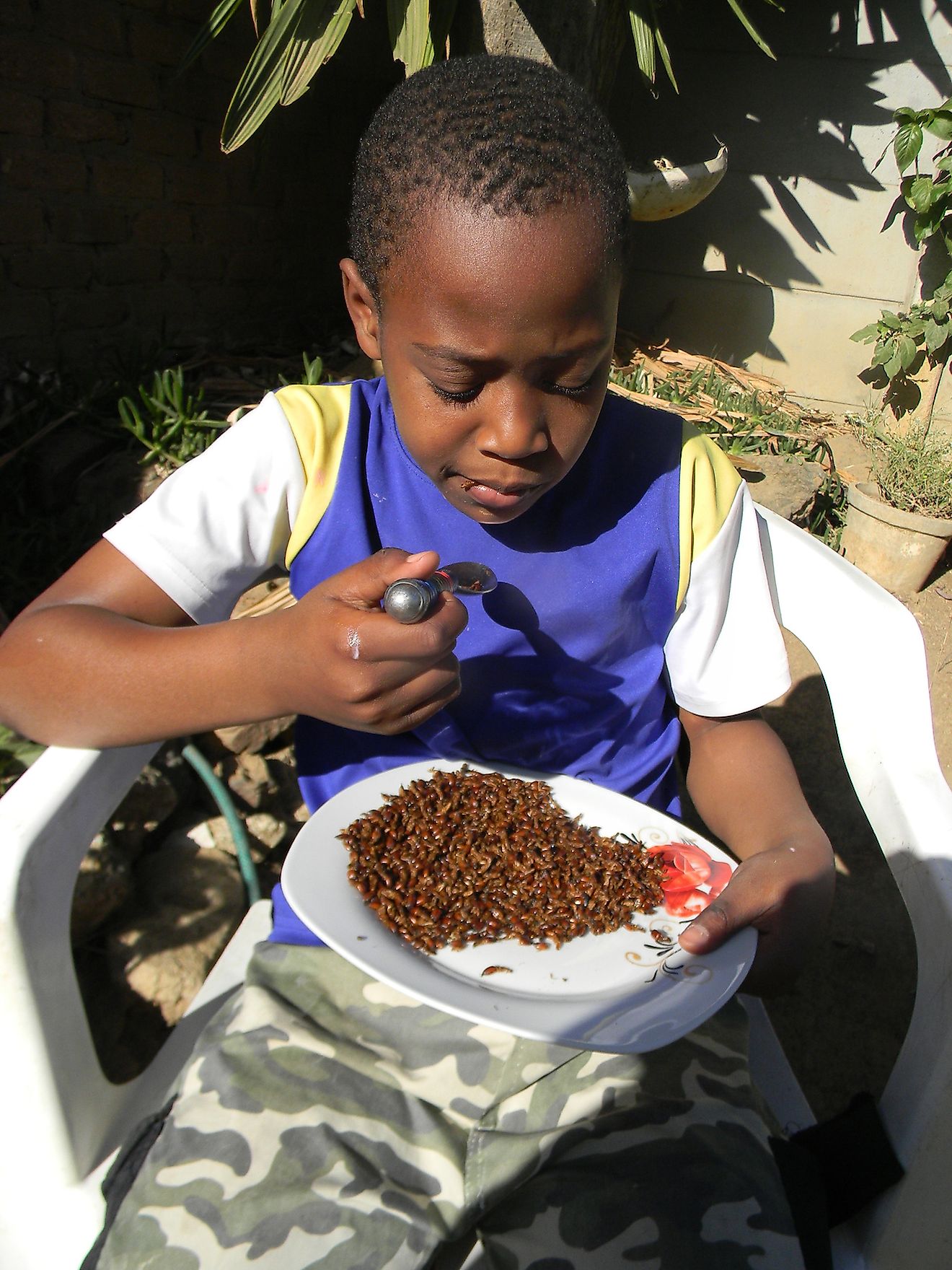
Termites have been part of the human diet for thousands of years, particularly in parts of Africa and Indonesia. They are easy to catch as they are drawn to light and are typically found in high numbers in fallen trees or rotting stumps in the wild, and sold by the pound. Winged termites are considered preferable, as they are larger and lend themselves well to toasting and eating as a finger food, and the wings fall off easily to make eating easier.
Known for a high oil content and nutty flavor, termites have high protein levels and are high in nutrients. They are typically roasted, fried, made into a flour, or added to things like cornmeal porridge or tea. In more rural areas of Africa, termites are often ground up and fed to babies with the belief their nutritiounal value will aid children's growth.
5. Scorpions
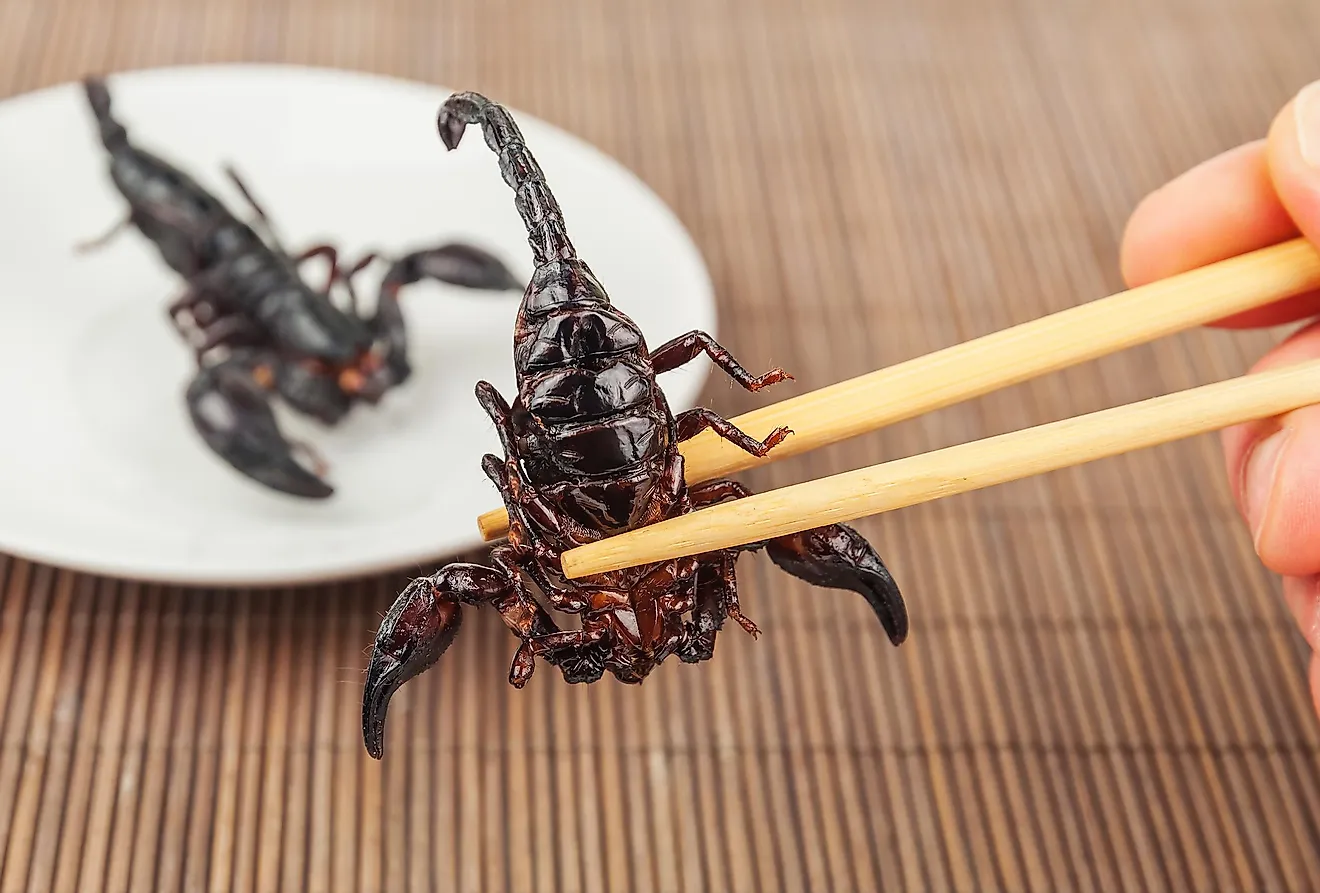
In China and Thailand especially, scorpions can be found on skewers at street markets, fried and seasoned. They are said to taste like soft-shell crab, and are sometimes served in a white wine sauce at fine dining establishments but can also be noshed on raw, with teh stinger being removed just prior to consumption.
Catching scorpions is a tricky business and usually includes removing the insect's tail and poison sac to avoid being poisoned, and both must be disposed of carefully so as not to poison others who may accidentally prick themselves on a discarded stinger. Removing the tail isn't absolutely necessary, as once cooked the toxicity is diminished, but most choose to follow the safe road.
Scorpions are high in iron and protein, and considered beneficial to the human body.
4. Tarantulas

While seeing a spider is enough to send some people running, in Cambodia they're seen as a delicacy - but not just any spider. Camodians dine on fried tarantulas or Thai zebra spiders, usually cooked up with fried garlic and spices after removing as much hair as possible and marinating them in sugar and salt. The spiders are crunchy on the outside with a gooey center. When cooked, their legs curl up and the amount of curl indicates how well-cooked the spider is.
Spiders are typically meatier than edible insects, but the abdomen, complete with eggs and innards, is considered the most delectable part of these arachnids. Their crunchy legs add to the dining experience and they are noted as having a crab-like and nutty flavor.
3. Cicadas
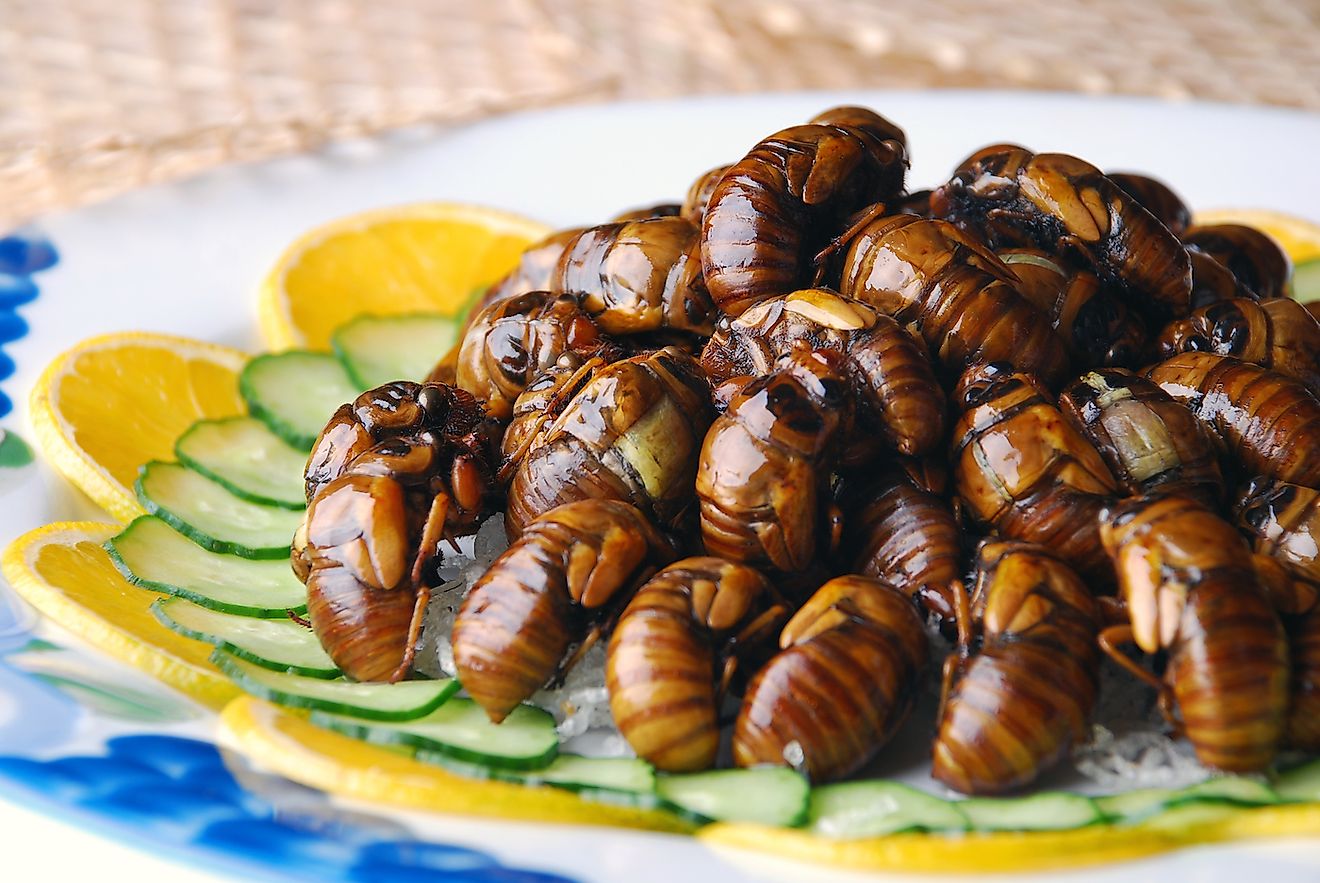
Cicadas are a rare treat, because the periodical cicada emerges only once every 17 years, as it lives most of its life underground sucking sap from tree roots in the eastern United States and throughout most Asian countries. In addition to their rare appearance above the surface, cicadas have a specific timeframe during which they should be caught - just after they molt their hard exoskeleton, when their soft, juicy bodies are exposed. the exoskeleton will reform, and then the cicada becomes too tough to eat.
They are sometimes deep-fried and dipped in sweet mustard or added to salads, or barbecued, and sometimes are the protein found in tacos. Most diners compare the cicada's flavor to asparagus.
2. Dragonflies
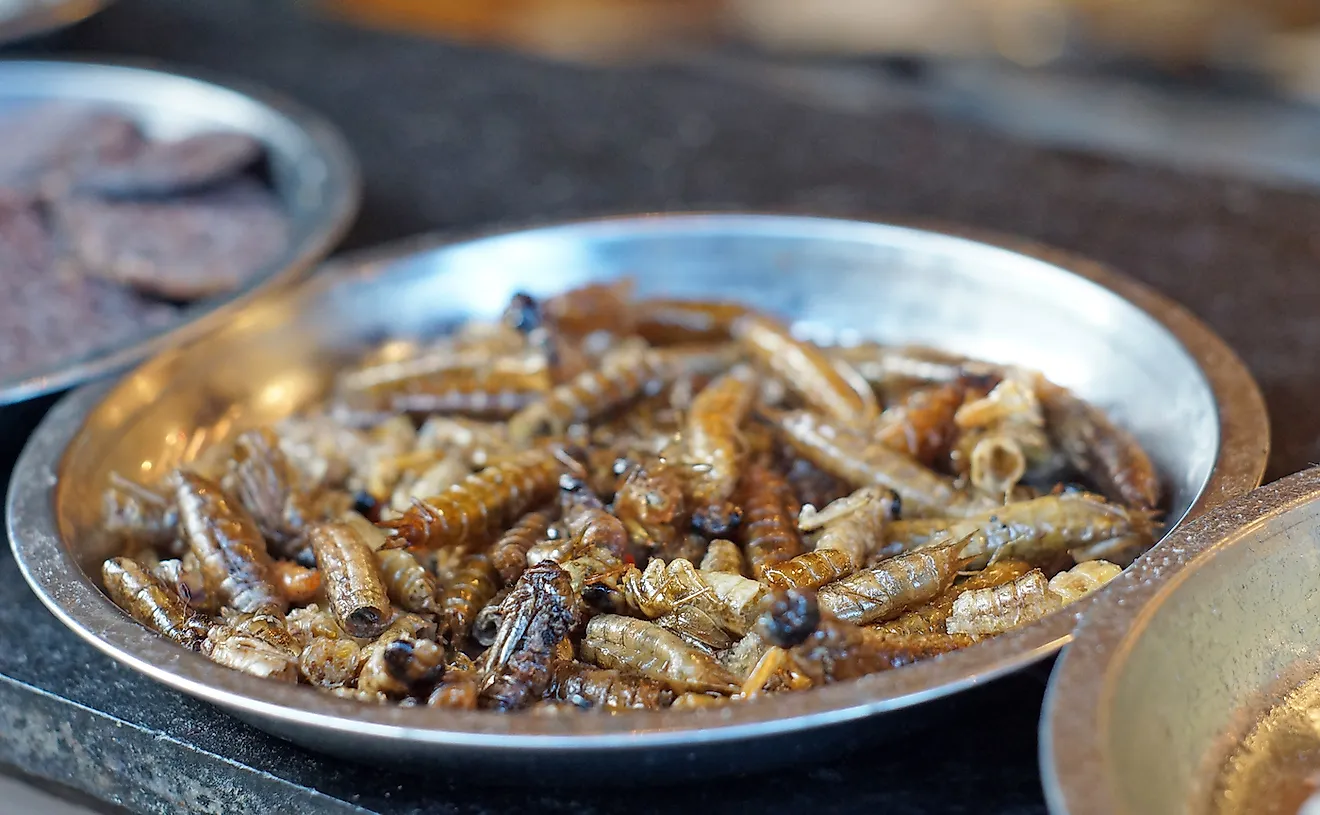
Majestic mosquito-eaters, dragonflies are hard to catch due to their quick flight, up to 25 or 30 miles per hour. Traditionally, they are caught by dipping a reed into palm sap and waving it through the air to snag dragonfly wings. In places like Indonesia and China, most children are taught to catch dragonflies.
Once their wings are removed, they can be boiled or for a sweeter treat they are dipped in batter and fried. Like tarantulas and scorpions, dragonflies are said to taste like soft-shelled crab. They are highly nutritious with high levels of protein, and their low fat content makes dragonflies a healthy snack.
1. Grubs
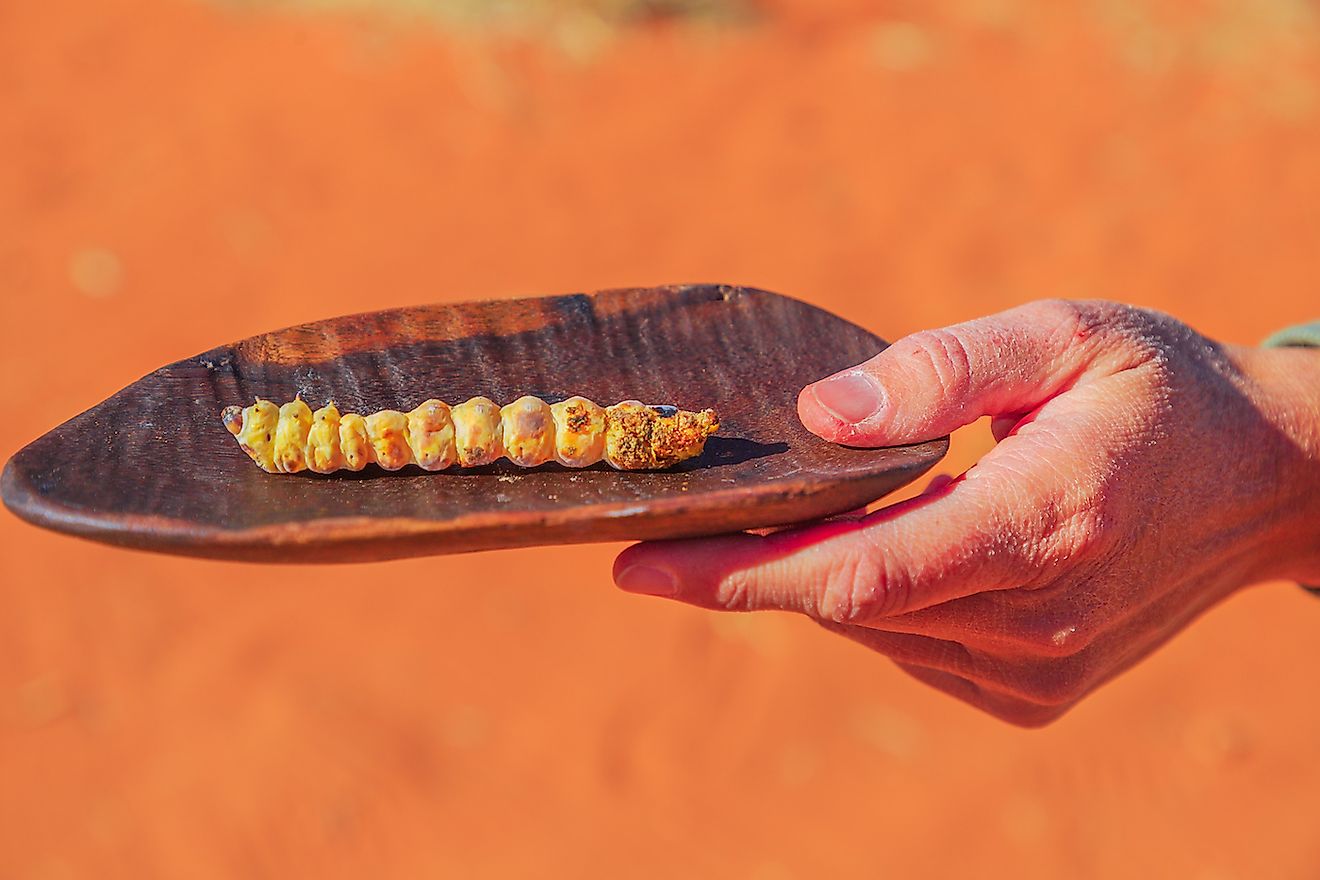
A native insect to Australia, the Witchetty grub larvae that eventually transform into moths, is a popular snack. It can be raised in the home and is considered a complete animal protein with a 100-gram serving containing 16 grams of protein and 29 grams of fat. Safe to eat raw, the Witchetty grubs are harvested from roots where they eat at the wood of trees and are a traditional treat for the Aborigines in Australia. Most people prefer to cook up the grubs and say their flavor is similar to roasted chicken.
Different species of grub are consumed in other parts of the world as well, with more than 344 edible varieties on Earth. Palm weevil grubs are found in some Asian countries, giant water bugs are more common in North America, and Africa is home to mopane worms. Some are small and crunchy, whereas others are fat and juicy.











